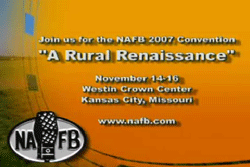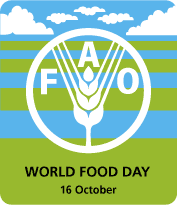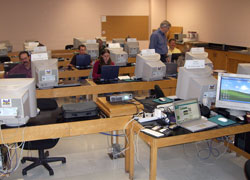 The production of biofuels plays a key role in both rural development and national security for one Pennsylvania agriculture official. Executive Deputy Secretary of the Pennsylvania Department of Agriculture says investing in homegrown biofuels, such as biodiesel and ethanol, translates into the investment in domestic, local economies. Redding was referencing the benefits of biofuel production in the wake of PA Governor Edward G. Rendell’s PennSecurity Fuels Initiative.
The production of biofuels plays a key role in both rural development and national security for one Pennsylvania agriculture official. Executive Deputy Secretary of the Pennsylvania Department of Agriculture says investing in homegrown biofuels, such as biodiesel and ethanol, translates into the investment in domestic, local economies. Redding was referencing the benefits of biofuel production in the wake of PA Governor Edward G. Rendell’s PennSecurity Fuels Initiative.
Testifying before the state House Committee on Environmental Resources and Energy, Redding said that Governor Edward G. Rendell’s PennSecurity Fuels Initiative, part of his Energy Independence Strategy, will support the production of nearly one billion gallons of renewable transportation fuels annually.
“For every dollar we don’t send overseas, that’s another dollar we can use to grow Pennsylvania’s economy,” said Redding, noting that the United States imports 60 percent of its oil, with Pennsylvania spending $30 billion annually on liquid fuels produced beyond the state’s borders. “Depending on fossil fuels from countries that are politically unstable or controlled by regimes hostile to America’s interests is a danger to our national security. Under Governor Rendell’s plan, our farmers, local communities, biofuel manufacturers, and trucking and rail industries all win, while curbing our reliance on foreign oil.”
Under the Governor’s PennSecurity Fuels Initiative, every gallon of gasoline sold in Pennsylvania will include 10 percent ethanol once in-state production reaches 200 million gallons per year; with incremental increases up to 20 percent once annual production reaches 300 million gallons.
 The National Association of Farm Broadcasting has had to make arrangements for extra rooms at hotels nearby the Westin Crown Plaza since as of today it’s sold out for their convention. Contact the office if you still need to make a reservation.
The National Association of Farm Broadcasting has had to make arrangements for extra rooms at hotels nearby the Westin Crown Plaza since as of today it’s sold out for their convention. Contact the office if you still need to make a reservation.
 The President of Florida Farm Bureau Federation is blogging. He’s John Hoblick and you can
The President of Florida Farm Bureau Federation is blogging. He’s John Hoblick and you can 
 You might recall that I recently conducted a new media class for a day at the University of Guelph. The grad students in that class all had their own blog started by the end of the day.
You might recall that I recently conducted a new media class for a day at the University of Guelph. The grad students in that class all had their own blog started by the end of the day. Hey all you farm podcasters out there. Here’s a new digital recorder to drool over and plan to put in your tool kit. Marantz is finally coming out with a small form recorder. Finally! I got to demo this one at the Podcast & New Media Expo. It’s supposed to be coming out some time in November and I will be placing an order.
Hey all you farm podcasters out there. Here’s a new digital recorder to drool over and plan to put in your tool kit. Marantz is finally coming out with a small form recorder. Finally! I got to demo this one at the Podcast & New Media Expo. It’s supposed to be coming out some time in November and I will be placing an order.

 The US Federal Appeals Court today ruled unanimously in favor of Syngenta Seeds, Inc., with respect to the patents asserted by Monsanto against Syngenta’s use and sale of Agrisure(R) GT (GA21 corn). The Court reaffirmed the summary judgment decision of May 10, 2006 by the Federal District Court that the asserted claims of the Shah patent were invalid and that the asserted claims of the Lundquist patents were not infringed.
The US Federal Appeals Court today ruled unanimously in favor of Syngenta Seeds, Inc., with respect to the patents asserted by Monsanto against Syngenta’s use and sale of Agrisure(R) GT (GA21 corn). The Court reaffirmed the summary judgment decision of May 10, 2006 by the Federal District Court that the asserted claims of the Shah patent were invalid and that the asserted claims of the Lundquist patents were not infringed. The production of biofuels plays a key role in both rural development and national security for one Pennsylvania agriculture official. Executive Deputy Secretary of the Pennsylvania Department of Agriculture says investing in homegrown biofuels, such as biodiesel and ethanol, translates into the investment in domestic, local economies. Redding was referencing the benefits of biofuel production in the wake of PA Governor Edward G. Rendell’s
The production of biofuels plays a key role in both rural development and national security for one Pennsylvania agriculture official. Executive Deputy Secretary of the Pennsylvania Department of Agriculture says investing in homegrown biofuels, such as biodiesel and ethanol, translates into the investment in domestic, local economies. Redding was referencing the benefits of biofuel production in the wake of PA Governor Edward G. Rendell’s